spring-boot-learning- Elasticsearch

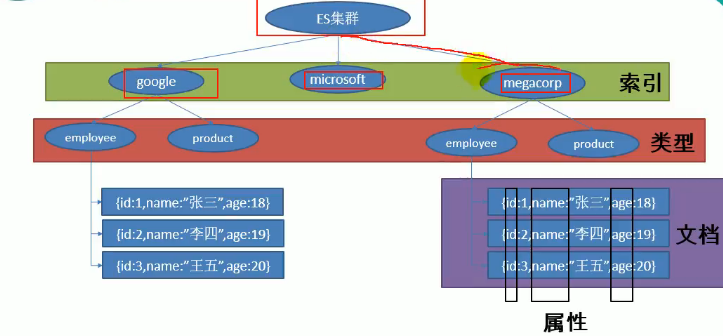
索引==数据库
类型==表
文档==表里面的记录
属性==表里面的列
使用RestFul风格elasticSearch进行操作
添加一个索引为megacorp,类型为employee,——id为1的文档
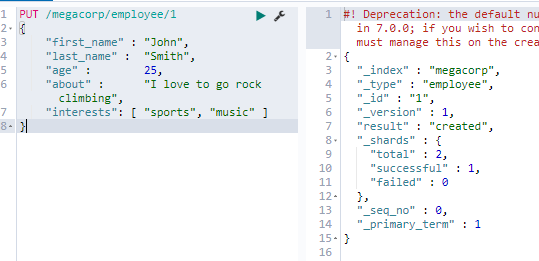
获得一个索引:
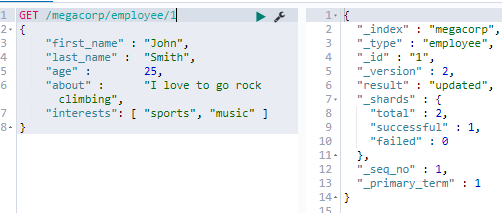
跟新文档,实际上也是用PUT
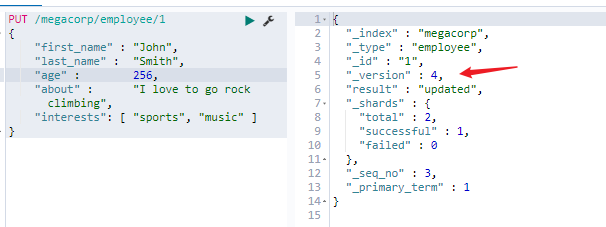
注意箭头的地方,每次对文档进行任何操作都会改变版本数
轻量级搜索
_search代替id进行搜索所有
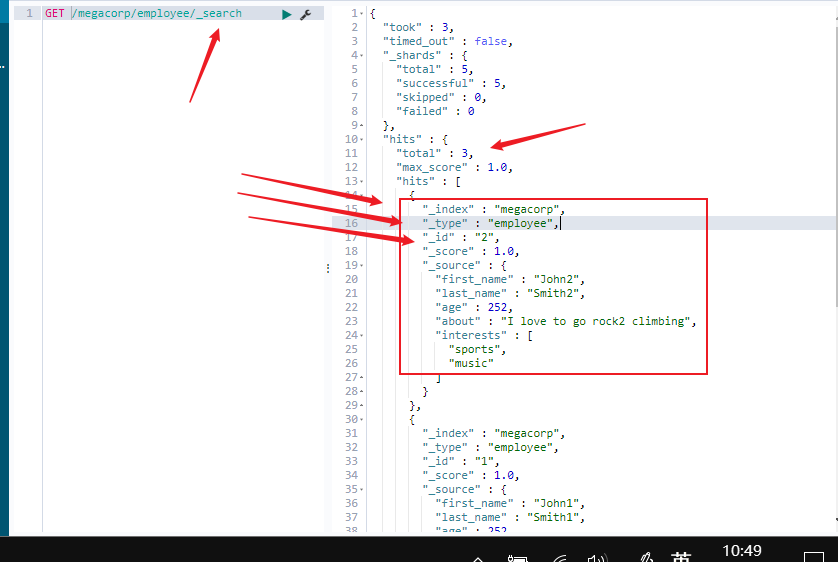
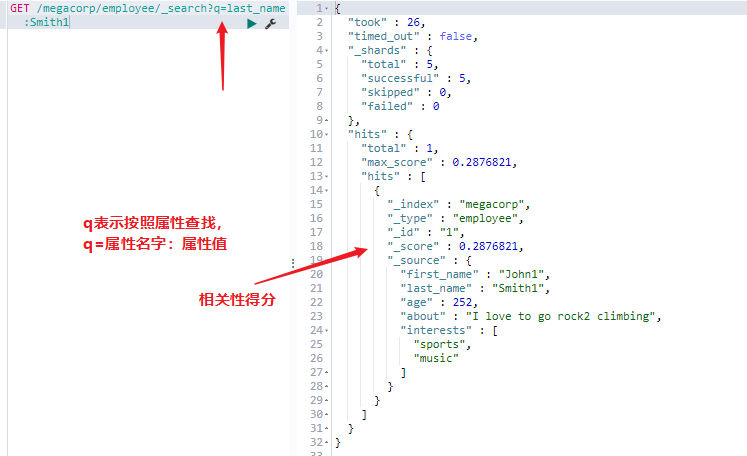
使用查询表达式json格式进行查询
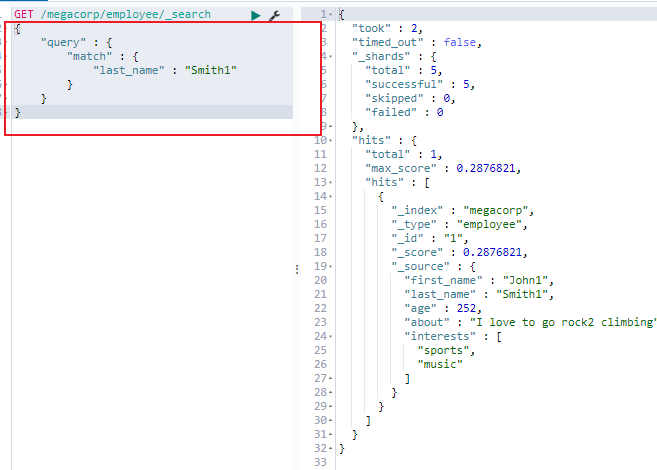
S
Springboot整合ES
先看看我们springboot为我们自动配置了什么
在org.springframework.boot.autoconfigure 自动配置包下的
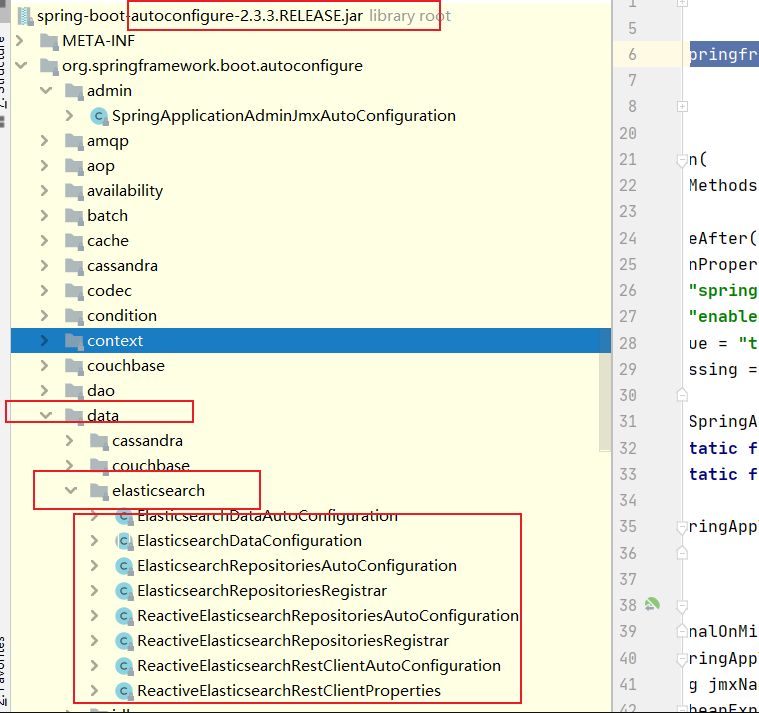
往下面看一下,会有另外一个elasticsearch的目录,里面:

注:这是另外一种和ES进行交互的工具

#######################################################################################
加入依赖:
<dependency>
<groupId>org.springframework.boot</groupId>
<artifactId>spring-boot-starter-data-elasticsearch</artifactId>
</dependency>
实体类对应elasticsearch的文档:
@Data @Document(indexName = "company",type = "employees",shards = 5,replicas = 1) /** * indexName: 索引库名称 * type: 类型 * shards: 分片数:默认为5个 * replicas: 副本数:默认为1个 */ public class Employe implements Serializable { /** *用来将对象中id和ES中_id映射 */ @Id private Long id; /** * `@Field`: 用来指定ES中的字段对应Mapping,相当于数据库中的列属性 * `type`: 用来指定ES中存储类型 */ @Field(type = FieldType.Text) private String name; @Field(type = FieldType.Text) private String password; @Override public String toString() { return "Employee{" + "id='" + id + '\'' + ", name='" + name + '\'' + ", password='" + password + '\'' + '}'; } }
获得操作接口:
/** * 直接继承 ElasticsearchRepository接口就可以了,里面已经帮我们实现了 * */ @Repository public interface EmployeRepository extends ElasticsearchRepository<Employe,Long> { }
增删改查
@SpringBootTest class EsdApplicationTests { @Autowired private EmployeRepository employeRepository; /** * 插入数据: */ @Test void testEmploye(){ Employe employee = new Employe(); employee.setId(5L); employee.setName("zhi"); employee.setPassword("789"); employeRepository.save(employee); } /** * 查询数据 */ @Test void testEmployeGet(){ Optional<Employe> employe = employeRepository.findById(2L); System.out.println(employe); } /** * 删除数据 */ @Test void delEmployeDel(){ employeRepository.deleteById(2L); } /** * 修改数据,实际就是保存数据 */ @Test void updEmployeUp(){ Employe employee = new Employe(); employee.setId(5L); employee.setName("zhi"); employee.setPassword("78955555"); employeRepository.save(employee); } }
如何取学习一个新的东西:找官方文档:
https://www.elastic.co/guide/index.html
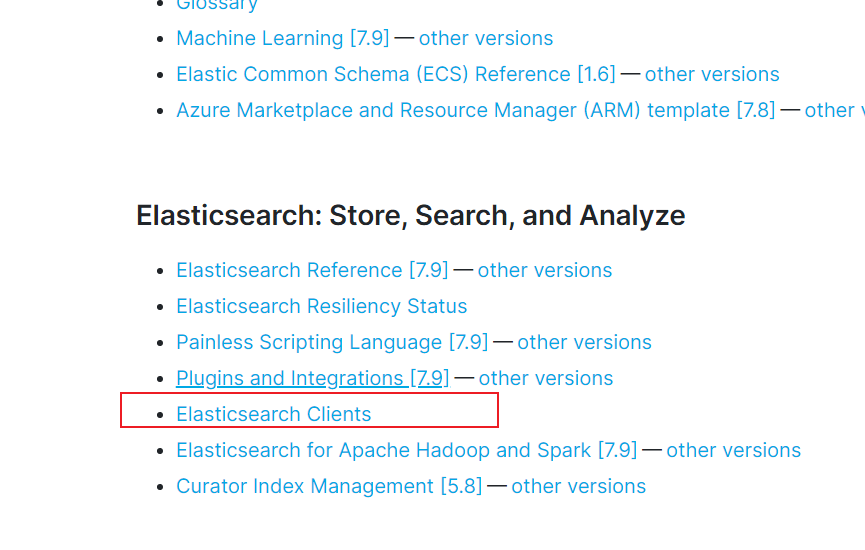
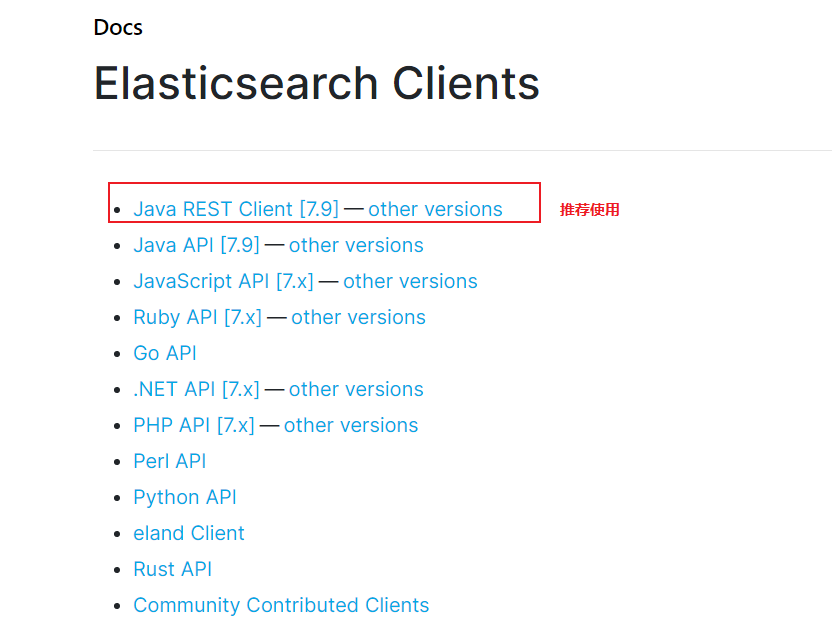
点进去,我们一半使用高级客户端
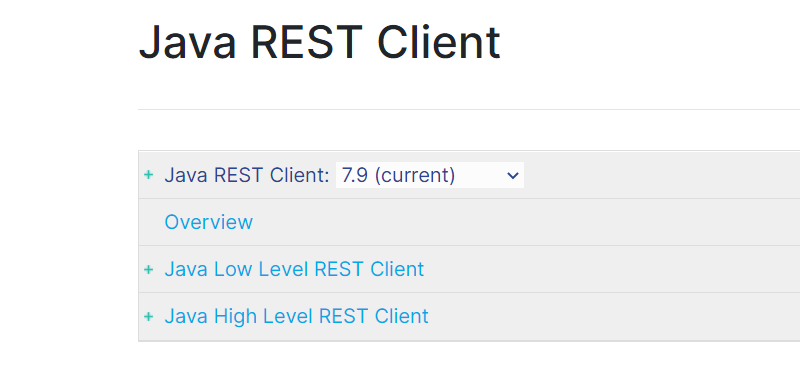
里面会有详细介绍怎么用:
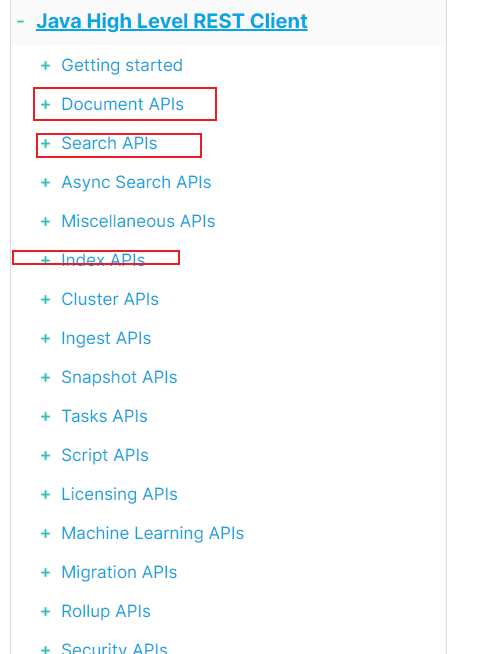
1 找到原生的依赖:
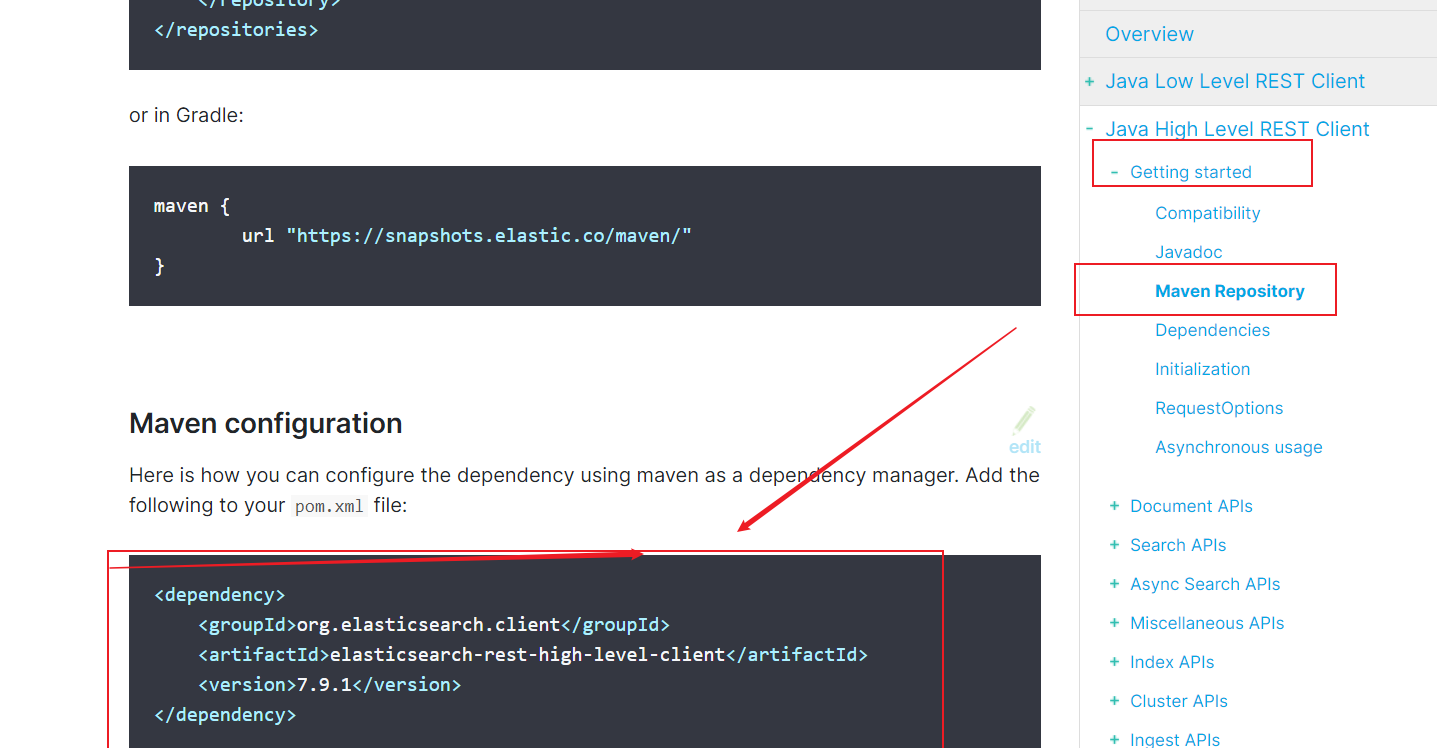
依赖的其他包:

2 找对象
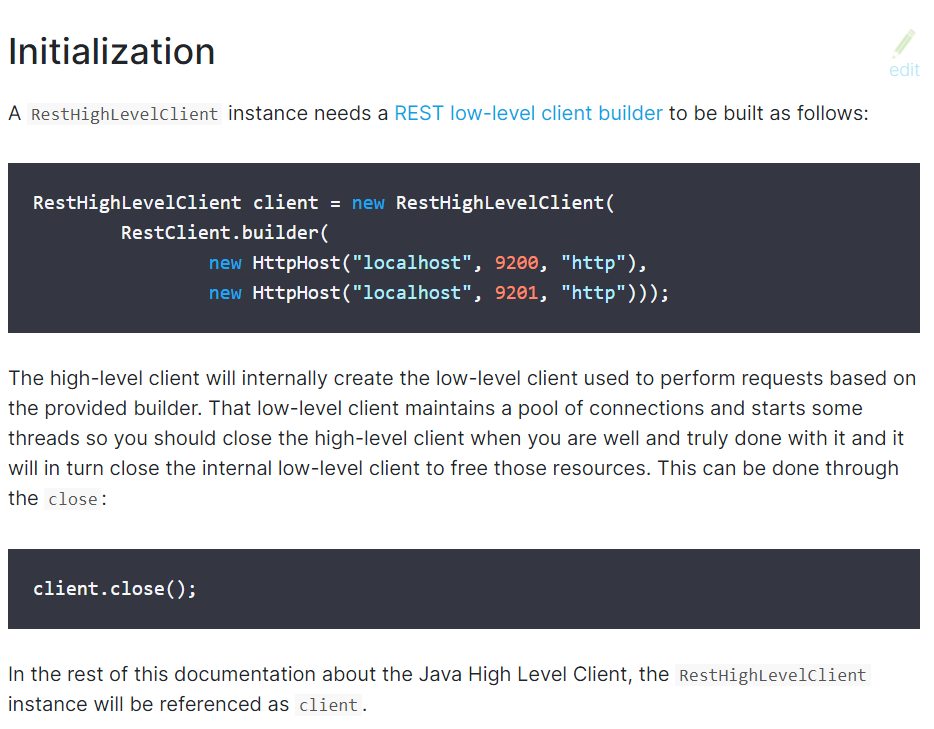
3分析类当中的方法
我新建一个工程:
导入依赖:
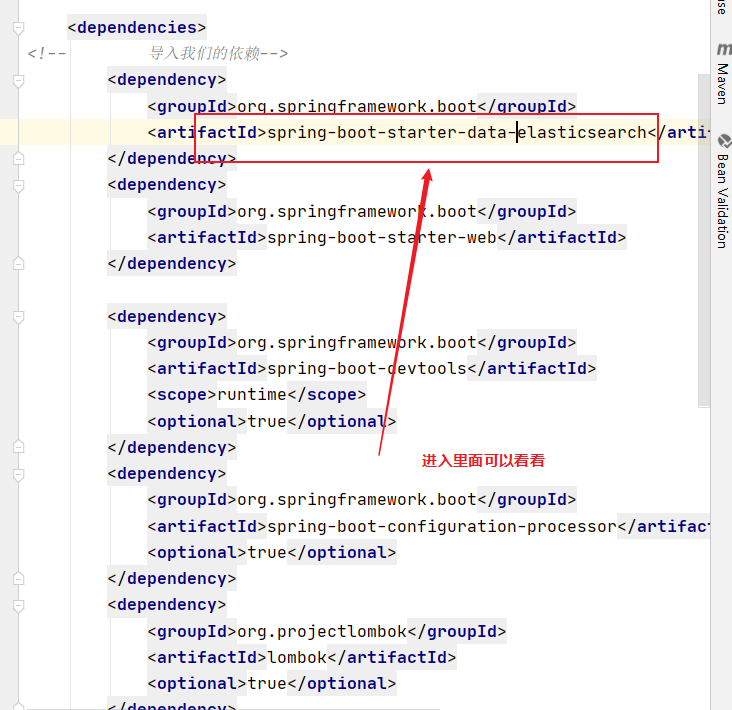
可以看到:
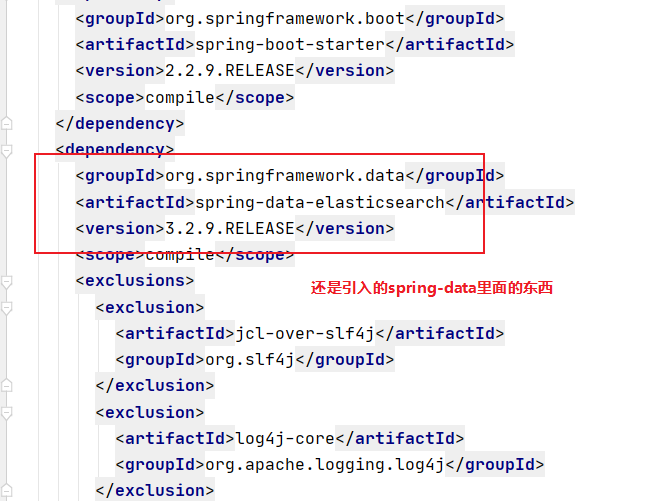
再进入spring-data里面:
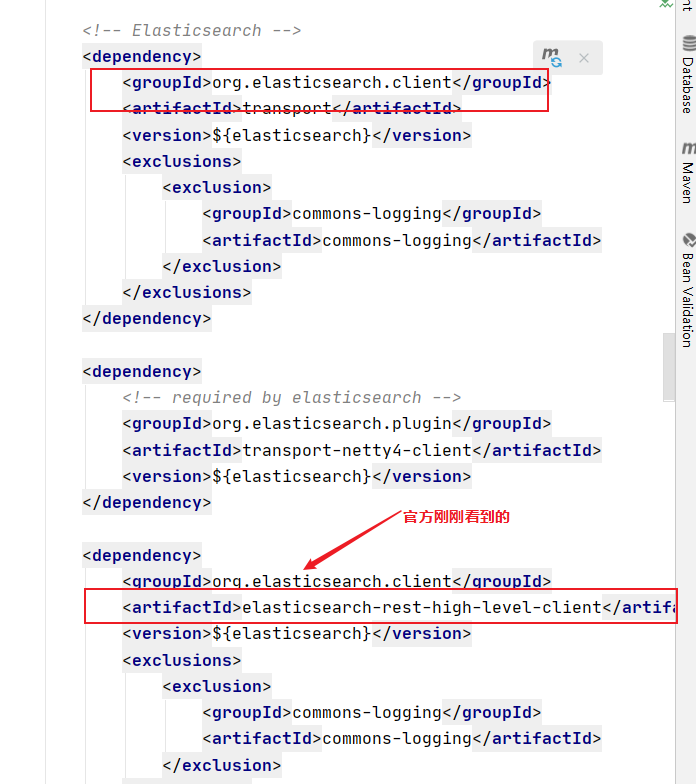
查看默认的版本:
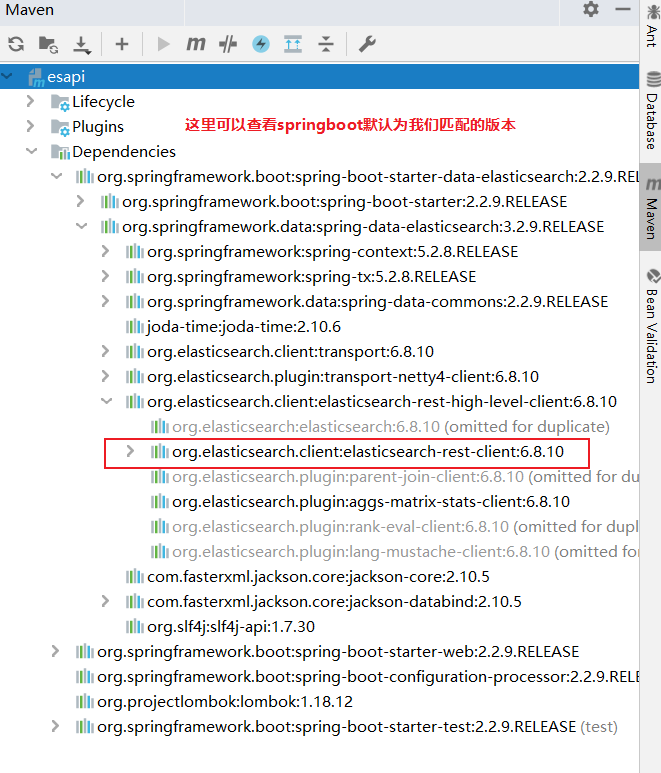
注意:我们导入的依赖必须和我们es的版本一致
自定义版本依赖
可以先点进去父pom里面看看
<artifactId>spring-boot-starter-parent</artifactId>
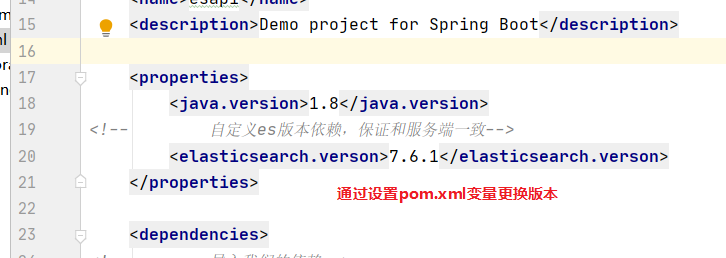
查看一下源码:
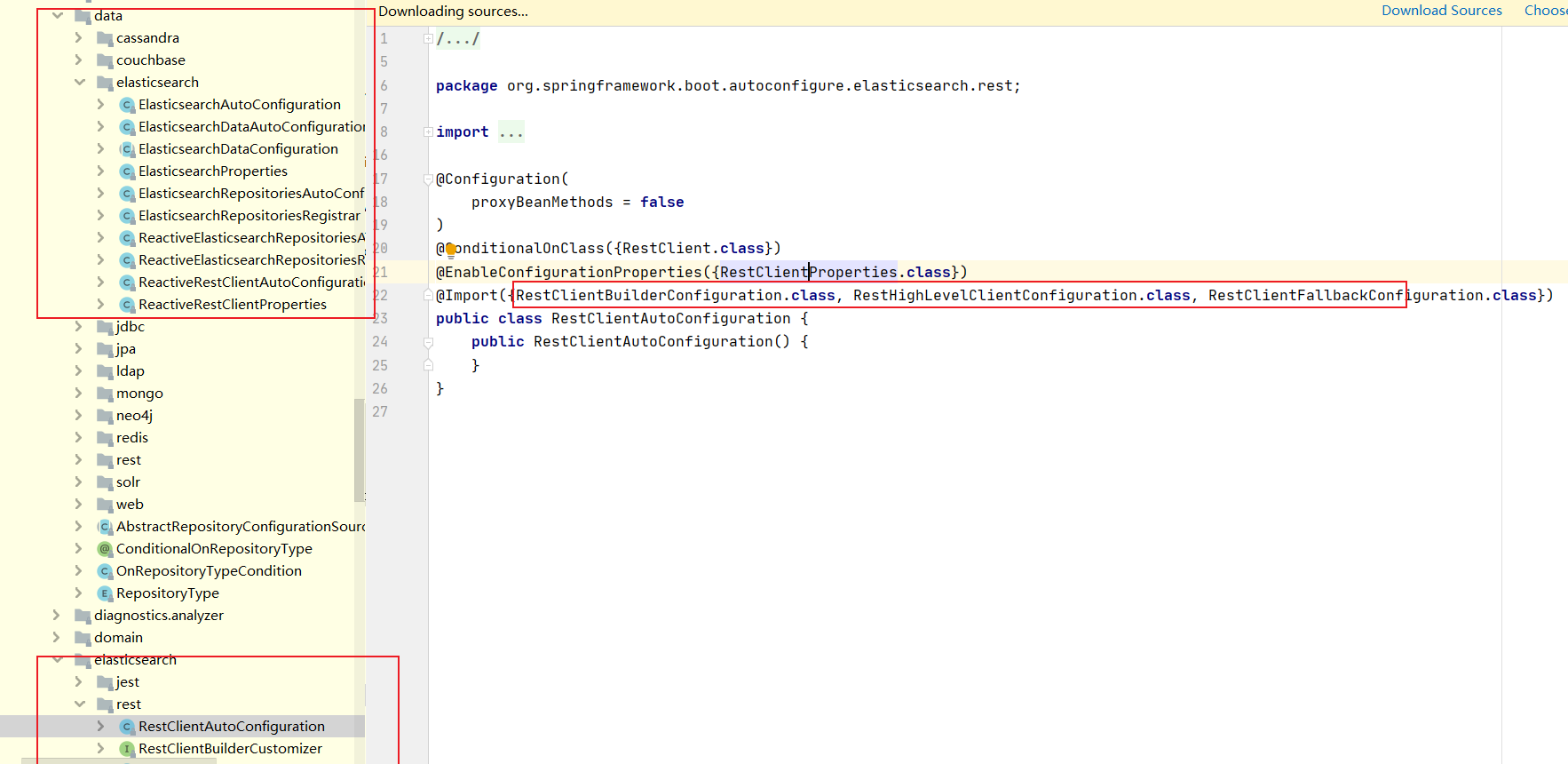
加入了这三个类
RestClientConfigurations.RestClientBuilderConfiguration.class, RestClientConfigurations.RestHighLevelClientConfiguration.class, RestClientConfigurations.RestClientFallbackConfiguration.class
都是静态内部类
其中关键的类就是RestClientBuilderConfiguration
class RestClientConfigurations { @Configuration(proxyBeanMethods = false) static class RestClientBuilderConfiguration { @Bean @ConditionalOnMissingBean RestClientBuilder elasticsearchRestClientBuilder(RestClientProperties properties, ObjectProvider<RestClientBuilderCustomizer> builderCustomizers) { HttpHost[] hosts = properties.getUris().stream().map(HttpHost::create).toArray(HttpHost[]::new); RestClientBuilder builder = RestClient.builder(hosts); PropertyMapper map = PropertyMapper.get(); map.from(properties::getUsername).whenHasText().to((username) -> { CredentialsProvider credentialsProvider = new BasicCredentialsProvider(); Credentials credentials = new UsernamePasswordCredentials(properties.getUsername(), properties.getPassword()); credentialsProvider.setCredentials(AuthScope.ANY, credentials); builder.setHttpClientConfigCallback( (httpClientBuilder) -> httpClientBuilder.setDefaultCredentialsProvider(credentialsProvider)); }); builder.setRequestConfigCallback((requestConfigBuilder) -> { map.from(properties::getConnectionTimeout).whenNonNull().asInt(Duration::toMillis) .to(requestConfigBuilder::setConnectTimeout); map.from(properties::getReadTimeout).whenNonNull().asInt(Duration::toMillis) .to(requestConfigBuilder::setSocketTimeout); return requestConfigBuilder; }); builderCustomizers.orderedStream().forEach((customizer) -> customizer.customize(builder)); return builder; } } @Configuration(proxyBeanMethods = false) @ConditionalOnClass(RestHighLevelClient.class) static class RestHighLevelClientConfiguration { @Bean @ConditionalOnMissingBean RestHighLevelClient elasticsearchRestHighLevelClient(RestClientBuilder restClientBuilder) { return new RestHighLevelClient(restClientBuilder); } @Bean @ConditionalOnMissingBean RestClient elasticsearchRestClient(RestClientBuilder builder, ObjectProvider<RestHighLevelClient> restHighLevelClient) { RestHighLevelClient client = restHighLevelClient.getIfUnique(); if (client != null) { return client.getLowLevelClient(); } return builder.build(); } } @Configuration(proxyBeanMethods = false) static class RestClientFallbackConfiguration { @Bean @ConditionalOnMissingBean RestClient elasticsearchRestClient(RestClientBuilder builder) { return builder.build(); } } }




 浙公网安备 33010602011771号
浙公网安备 33010602011771号